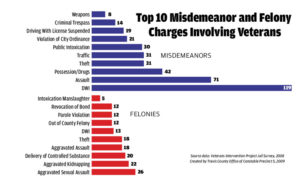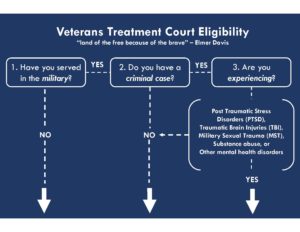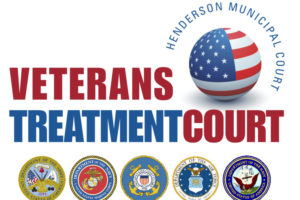Orange County Veteran’s Court
Orange County Veteran’s Court
What is Veteran’s Court?
Orange County Veteran’s Court is a unique program that has been run in the County of Orange since 2008. It is a special court to handle cases of veterans who get caught up in the criminal justice system. It’s one of only nine of its kind in the state. Orange County Superior Court Judge Wendy Lindley helped start the county’s veterans court here in Orange County.
It exists as a therapeutic alternative and support service to be provided to US military service personnel who become involved with the criminal justice system, and who are in need of effective mental health treatment to address issues such as Post Traumatic Stress Disorder “PTSD”, Traumatic Brain Injury “TBI” and other serious mental health problems.
Orange County Veterans Court is a collaborative partnership with the U.S. Department of Veterans Affairs’ Long Beach Healthcare System, which has provided the funding for a full-time case manager, and with other State and local veteran service providers.
Why was Veteran’s Court developed?

An important measure of the success of Veterans Treatment Court is the rate of recidivism, or re-arrest, for graduates of the program. In determining the rate of recidivism, the arrest records of all program graduates are reviewed each year after their graduation, and any arrest since graduation is noted. Of the 53 participants who have graduated since the inception of the program, only 6 have been rearrested.
Who qualifies for Veteran’s Court?
 To be eligible for the program, potential participants must have been honorably discharged from U.S. military service; and , pursuant to California Penal Code Section 1170.9, They must have PTSD, TBI, SMT, Substance Abuse, or other psychological problems arising from that service period. Of course, they must also be facing criminal charges in Orange County.
To be eligible for the program, potential participants must have been honorably discharged from U.S. military service; and , pursuant to California Penal Code Section 1170.9, They must have PTSD, TBI, SMT, Substance Abuse, or other psychological problems arising from that service period. Of course, they must also be facing criminal charges in Orange County.
Note that according to the veteran’s court program statistics, DUI charges in Orange County are the most common crime that gets people into Veteran’s Court for treatment.
The participants are mainly men, and most commonly those that served in combat in Iraq or Afghanistan. Most are in their 20s and 30s.
For a vet to be accepted into veterans court, a multi-agency team must decide first if rehab will best serve the vet and the public. That vet then has to plead guilty to the crime charged. He or she will get probation, and then enter a four-phase recovery program that takes at least a year and a half.
Where is Veteran’s Court offered in Orange County?
Veteran’s Court is offered in one location, but it has two components to the program, which are in different but nearby locations.
Combat Veterans Court
ADDRESS: OC Superior Court Community Courts Building 909 N. Main St., Santa Ana, CA 92701
PHONE NUMBER: (657) 622-5816
Veterans Court Services
Veterans’ Court Services provides case management to veterans in the OC Superior Court system and the Veterans Non-Criminal Domestic Violence Family Court. This service provides case management to court-assigned veterans who are in need of professional support, referrals and linkages to the Veteran Administration (VA), Veterans Centers, and community organizations that provide treatment and other services to veterans, military, and family members.
ADDRESS: OC Veteran’s Court Services, 1300 South Grand Avenue, Building B. Santa Ana, CA 92705
When does Veteran’s Court meet?

The program, which is at least 18-months long, includes mental health treatment; substance abuse treatment as appropriate; and connection to many social services, medical services, and housing. The original model had veterans coming to court twice each week in the early part of the program.
Each participant is also paired with a volunteer combat veteran mentor who acts as their coach, role model, and advocate, guiding the veteran through the entire program and lending support when needed. Participants also meet regularly with their probation officer and report back to court for regular progress reviews with the judge.
The four-phase Veterans Court program has a minimum 30-day orientation phase, a minimum 90-day treatment plan development phase, a minimum 90-day ongoing treatment phase and a minimum 145-day stabilizing/mentoring phase. The last phase is transition to graduation. Those phases include regular but random drug and alcohol testing, no unexcused absences, education, regular court appearances, creation of a life plan, compliance with probation and VA treatment recommendations and written reports on progress.


